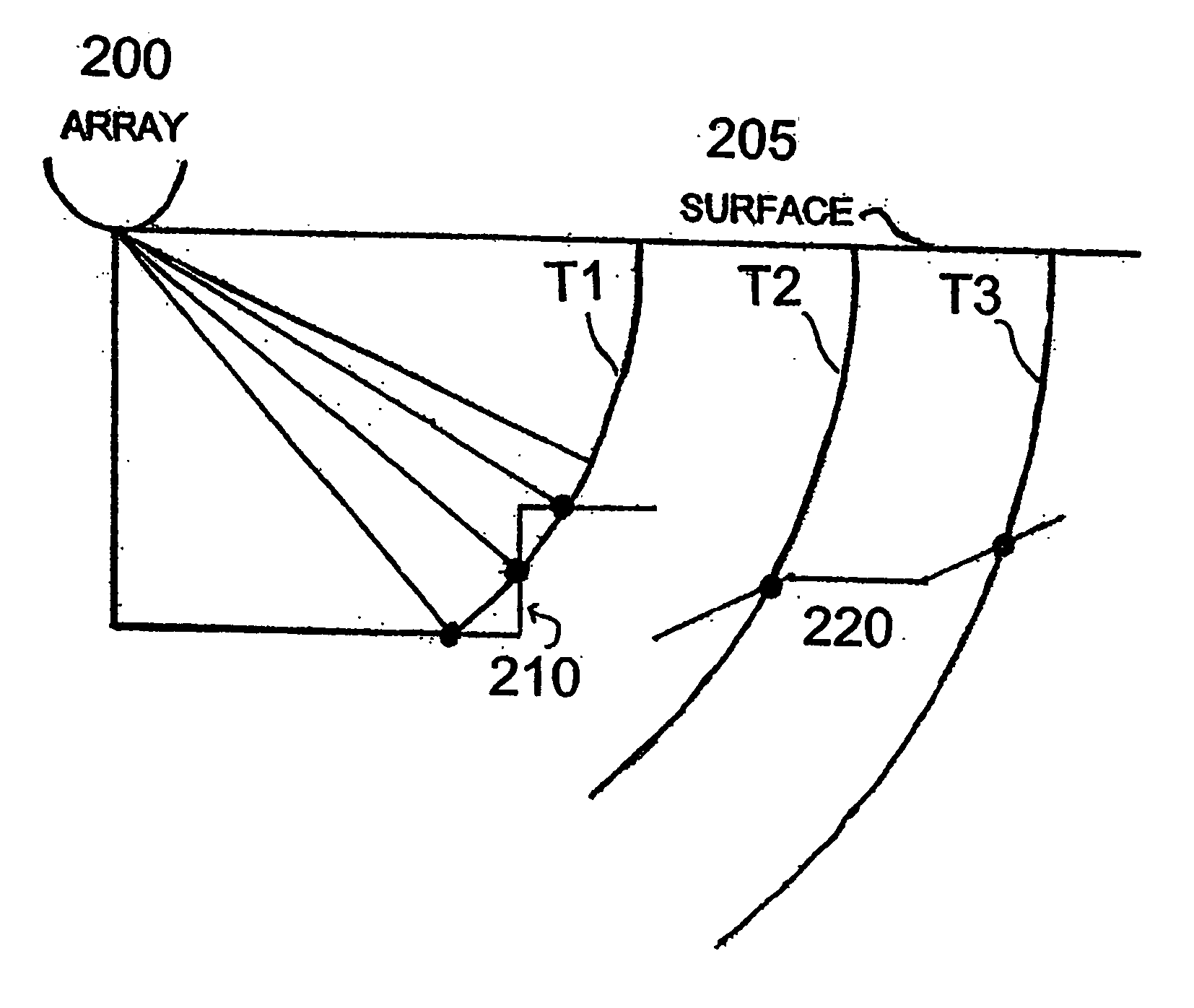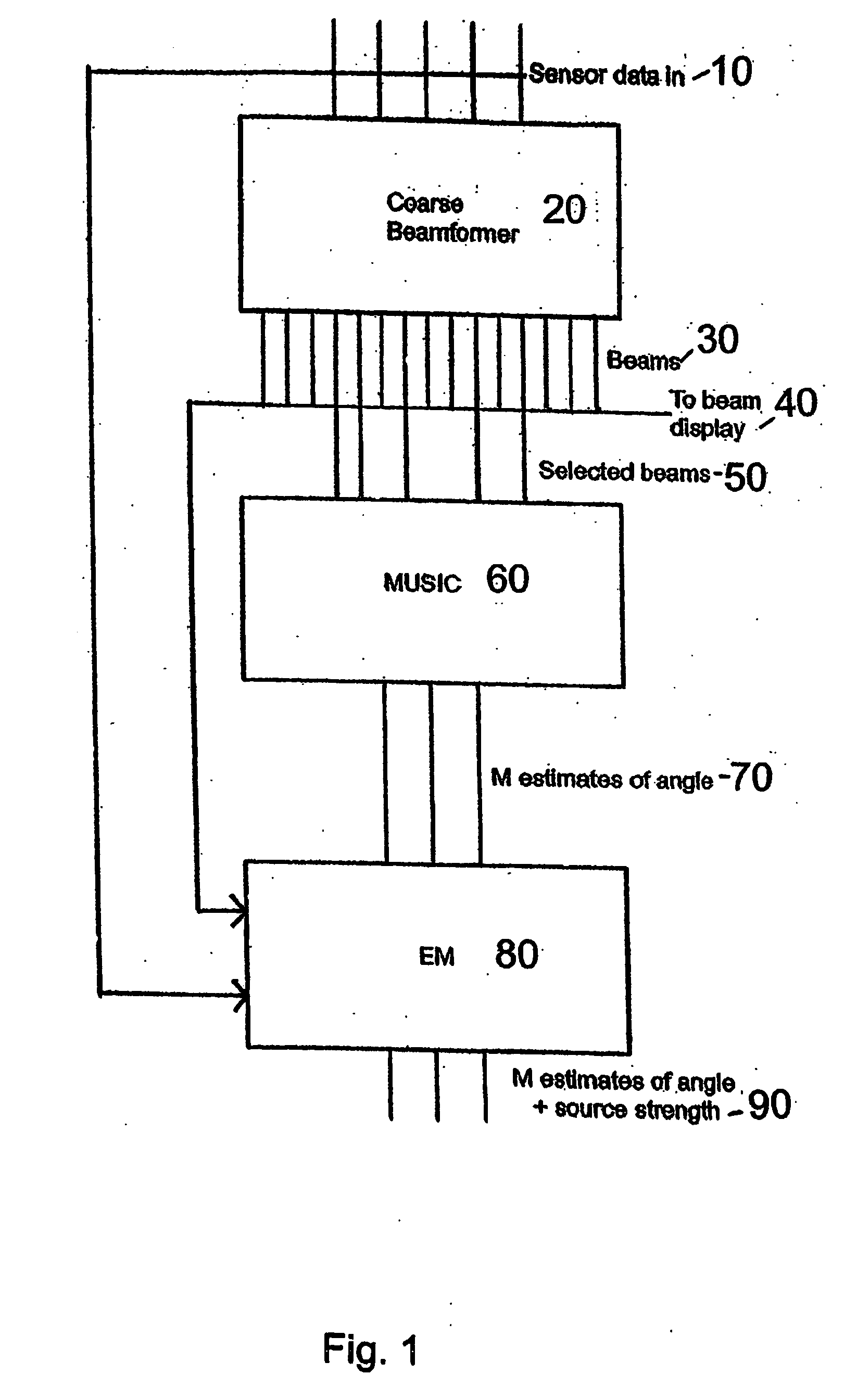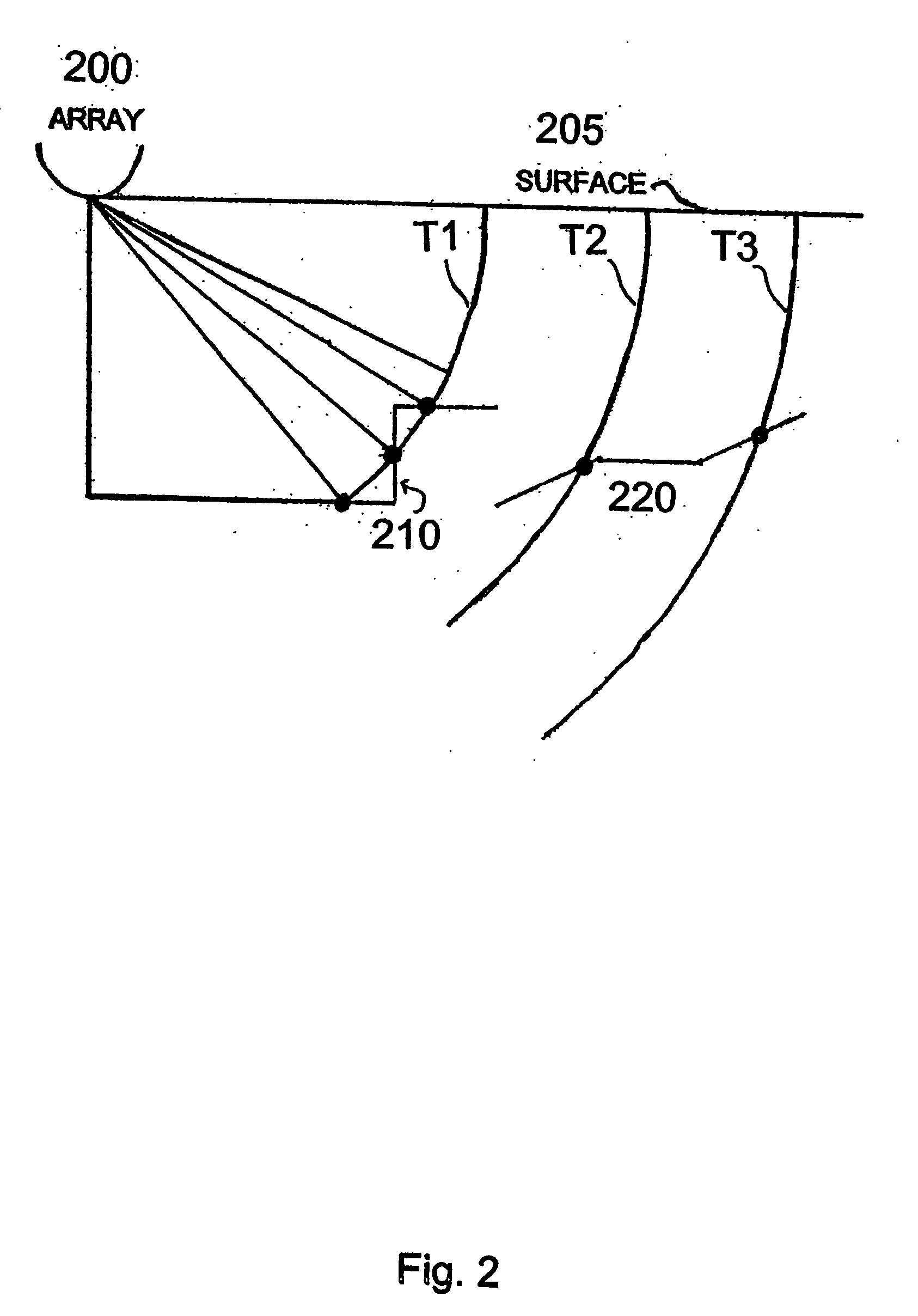Resolving directional information in sonar arrays
a sonar array and directional information technology, applied in the field of directional information resolution in sonar arrays, can solve the problems of poor public image of techniques, inability to resolve more than one source at each range without special fixes, and inability to achieve directional resolution. , to achieve the effect of improving angular resolution
- Summary
- Abstract
- Description
- Claims
- Application Information
AI Technical Summary
Benefits of technology
Problems solved by technology
Method used
Image
Examples
Embodiment Construction
[0023] The approach to resolving directional information from the data streams received by hydrographic arrays is built on the understanding that the desired information is embedded in the data streams from the array transducers. The problem is therefore estimation, rather than blind application of any algorithm.
[0024] Referring first to FIG. 1, the input is a block of raw data 10 from the hydrophones of a hydrographic array. A block is received for each time instant of sensing. ‘Coarse’ beams 30 are formed 20 using linear combinations of the sensor (complex) time series. The beamforming weights are specific to the array geometry, placement of the sensors, individual sensor directivity, and transmit ping details including time envelope. The beams are ‘coarse’ because there are 180 overlapping beams each having approximately 2° resolution and they do not have sufficient resolution for hydrography. The beams can be displayed 40 to a user.
[0025] At each time step, a variant of the MU...
PUM
 Login to View More
Login to View More Abstract
Description
Claims
Application Information
 Login to View More
Login to View More - R&D
- Intellectual Property
- Life Sciences
- Materials
- Tech Scout
- Unparalleled Data Quality
- Higher Quality Content
- 60% Fewer Hallucinations
Browse by: Latest US Patents, China's latest patents, Technical Efficacy Thesaurus, Application Domain, Technology Topic, Popular Technical Reports.
© 2025 PatSnap. All rights reserved.Legal|Privacy policy|Modern Slavery Act Transparency Statement|Sitemap|About US| Contact US: help@patsnap.com



